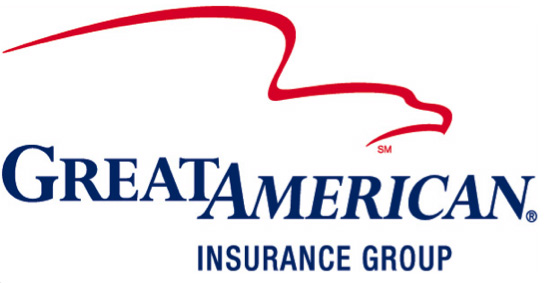Find Markets,
Get Quotes
Simply search by coverage or keyword and find the market you are looking for in seconds.
This Week's Featured Markets
-

SES Single Family Rental Program – Portfolio
Programs Details -

Transportation
Programs Details -

Crane & Rigging
Programs Details -

HabPro Insurance – Commercial Real Estate Insurance
Programs Details -

Inland Marine
Programs Details
Stay Up To Date on New Markets
Get alerts to your inbox on new and trending markets each week.
Connecting People with Insurance Problems to People with Insurance Solutions
Whether you are a Carrier, MGA, Wholesale, Retail Agent, or Broker, we have a solution for you. Leverage our platform to streamline your processes and grow your business.
Looking For Market Distribution?
ProgramBusiness for Carriers, MGA’s & Wholesalers
Our robust platform enables agents to quickly contact you and begin the underwriting, quoting, and submission process.
Schedule a demo Learn MoreGet a searchable business directory, with any number of program listings
Get your program in front our our network of over 80,000+ independent agents
Market your programs via on site ads and email marketing campaigns
Looking for a Market?
ProgramBusiness for Retail Agents & Brokers
Find the perfect market for your risk. Search by coverage or keyword and region and start getting quotes immediately.
Sign Up for Free Learn moreSearch 350+ Specialty Programs by coverage or keyword
Submit Acords, Drivers’ Schedules, and Loss Runs directly on the platform
Try new niche markets and expand your footprint in industries you already serve
ProgramBusiness News
The world of insurance delivered. Insurance Industry News carefully curated by insurance industry experts. Stay up to date on breaking news, industry changes and updates, and press releases from all the major players.
Sign Up to Receive Updates Straight to Your Inbox
Coalition Finds More Than Half of Cyber Insurance Claims Originate in the Email Inbox
“Threat actors want to get paid, and the email inbox has proven to be an easy place for an attacker to uncover payment information and potentially intervene in payment processes to steal funds,” said Robert Jones, Coalition’s Head of Global Claims. “In 2023, Coalition endeavored to make recovering from a cyber incident as painless as possible for our policyholders: We successfully helped claw back more than $38 million in fraudulent transfers and handled 52% of all reported matters without out-of-pocket payments.”
The report also revealed an increased risk for organizations using boundary devices, such as firewalls and virtual private networks. While these tools can help to reduce cyber risk, using some boundary devices can actually increase the likelihood of a cyber claim if they have known vulnerabilities. For example, Coalition found businesses with internet-exposed Cisco ASA devices were nearly five times more likely to experience a claim in 2023, and businesses with internet-exposed Fortinet devices were twice as likely to experience a claim.
“We also found that policyholders using internet-exposed remote desktop protocol were 2.5 times more likely to experience a claim,” said Shelley Ma, Incident Response Lead at Coalition’s affiliate, Coalition Incident Response. “With new AI tools making it even easier to execute targeted cyber attack campaigns and identify exploitable assets, having an active partner that can help protect your organization from digital risk is crucial.” This new insight comes following Coalition’s Security Labs researchers’ discovery of a 59% increase in unique IP addresses scanning for open remote desktop protocol throughout last year.
Other key findings from the report include:
- Overall claims frequency increased 13% year-over-year (YoY), and overall claims severity increased 10% YoY, resulting in an average loss of $100,000. Claims frequency increased across all revenue bands, with businesses between $25 million and $100 million in revenue seeing the sharpest spike (a 32% YoY increase).
- As ransomware payments hit $1 billion globally, Coalition ransomware severity dropped by 54%. Ransomware severity, frequency, and demands all dropped in 2H 2023, though not enough to offset the surge in 1H.
- Ransomware frequency was up 15% YoY, and severity was up 28%, to an average loss of more than $263,000.
- When policyholders found it reasonable and necessary to pay a ransom, Coalition helped policyholders negotiate demand amounts down by an average of 64%.
- FTF frequency increased by 15% YoY, and severity increased by 24%, to an average loss of more than $278,000.
- BEC frequency increased by 5% YoY, and severity decreased by 15%.
Download the full 2024 Cyber Claims Report from Coalition to learn more: https://info.coalitioninc.com/download-2024-cyber-claims-report.html.
About Coalition
Coalition is the world's first Active Insurance provider designed to help prevent digital risk before it strikes. By combining comprehensive insurance coverage and cybersecurity tools, Coalition helps businesses manage and mitigate potential cyber attacks. Leveraging its relationships with leading global insurers and capacity providers, including Coalition Insurance Company, Coalition offers Active Insurance products to businesses in the U.S., the U.K., Canada, and Australia. Policyholders can receive automated cyber alerts and access expert advice and global third-party risk management tools through Coalition's holistic cyber risk management platform, Coalition Control™.



